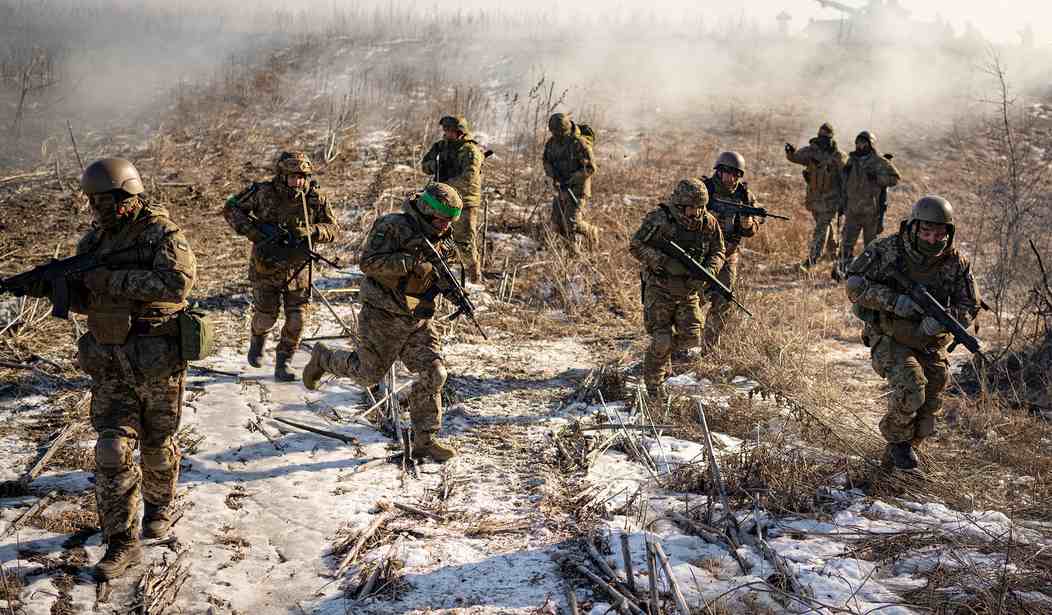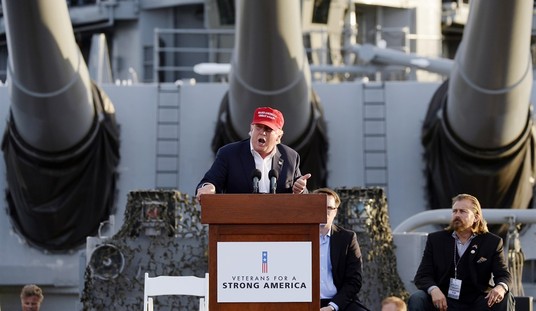Ukraine used two naval drones to attack the only road bridge connecting Russia with the occupied Crimean Peninsula, severely damaging the structure and making it impassable for most road traffic until mid-September.
It’s the second time the bridge has been hit. Last October, another drone strike reduced traffic on the bridge but didn’t take it out.
Russian Deputy Prime Minister Marat Khusnullin inspected the site on Monday and told Putin that one span of the bridge would have to be completely replaced. The Wall Street Journal reports that “Repair crews are trying to fix it in place and will test it initially with vehicles up to three tons, the weight of a passenger car, and then up to five tons, the weight of an average ambulance, hoping to reopen the lane for limited use.”
A White House spokesman said that the damage would not severely impact Russia’s warfighting capability.
But the symbolic nature of the strike cannot be ignored. The Russians spent $4 billion on the bridge and it has become “a major symbol of Putin’s drive to wash away the humiliation he says had been inflicted on Russia by the Soviet Union’s collapse,” according to the WSJ. The first attack on the bridge occurred just hours after Putin’s birthday celebration.
Last October, after the first strike on the bridge, Putin ordered wave after wave of strikes on Ukraine’s electric grid and water supply. After some initial damage, most power and water services were restored in a matter of hours.
This time, Russian missiles hit port facilities in Odessa and Mykolaiv. The Ukrainian air force claims to have knocked down most of the missiles, but there was extensive damage to a warehouse and several other buildings. The Russians called it a “mass revenge strike.”
Meanwhile, the U.S. and the rest of Ukraine’s allies are getting antsy about the lack of progress of the much-ballyhooed counteroffensive against Russia. After spending billions of dollars to train and equip a large segment of the Ukrainian army, military planners are upset that the Ukrainian military isn’t using the tactics they were trained to employ on the battlefield. That would enable the kind of breakthroughs Ukraine enjoyed at the beginning of the war.
Western officials and analysts say Ukraine’s military has so far embraced an attrition-based approach aimed largely at creating vulnerabilities in Russian lines by firing artillery and missiles at command, transport and logistics sites at the rear of the Russian position, instead of conducting what Western military officials call “combined arms” operations that involve coordinated maneuvers by large groups of tanks, armored vehicles, infantry, artillery and, sometimes, air power.
“We cannot use meat-grinder tactics as the Russians do,” Oleksii Reznikov, Ukraine’s defense minister, said in an interview. “For us, the most precious thing is the lives and health of our soldiers. That is why our task is to achieve success at the front while protecting lives.”
Related: Going to War? Biden Mobilizes U.S. Reserves to Defend NATO
The U.S. and its allies aren’t worried as much about the lives and health of Ukraine’s soldiers as they are about the attitudes of the Western voting public toward the war. With conservative opposition to the conflict growing, Joe Biden can’t afford to be patient. He’s been urging Russian President Volodymyr Zelensky to press the offensive. But the front is long and extremely well-defended.
Five weeks into the highly anticipated operation, Ukrainian forces are attempting to weaken Russian defenses by firing fusillades of artillery and missiles and sending small teams of sappers into the sprawling minefields that constitute their adversary’s outermost ring of defense. But the pace of progress, in three main areas along a vast 600-mile front line, has generated concerns in the West that the government of President Volodymyr Zelensky may not deliver as powerful a blow as it could.
Ukrainian commanders have embraced more low-profile advances involving groups of 15 to 50 people on foot, said Kateryna Stepanenko, a Russia analyst at the Institute for the Study of War. She said the sappers advance on their bellies to find and disable enemy mines — a time-consuming process that does not lend itself to quick, massive blows that would strike deep into Russian defensive lines.
Rob Lee, a former Marine infantry officer, says these tactics minimize losses but come with trade-offs.
“Advancing on foot will likely reduce the attrition they sustain,” he said. “But it means the advances will be slower and have less opportunity to achieve a rapid breakthrough.”
Putting the best face on a slow, methodical advance, Lt. Gen. Douglas A. Sims claimed the Ukrainians were being asked to employ new equipment and tactics “all while being shot at and bombed” as they attempt to traverse a massive minefield.
“And so where they are gaining hundreds of meters a day, maybe a kilometer a day in some places, they’re doing that at great cost in terms of effort,” he told reporters last week. “This is hard warfare; it’s in really tough terrain; it’s under fire, and really, when you consider all of that, it’s pretty remarkable,” he said.
The realistic goal of this counteroffensive for the U.S. and Ukraine’s allies is to see Kyiv take back enough Ukrainian territory and inflict enough casualties on Putin to bring him to the negotiating table. But Putin has already shown that Russian losses don’t matter to him: he’s willing to use as many resources and sacrifice as many lives as it takes to win.










